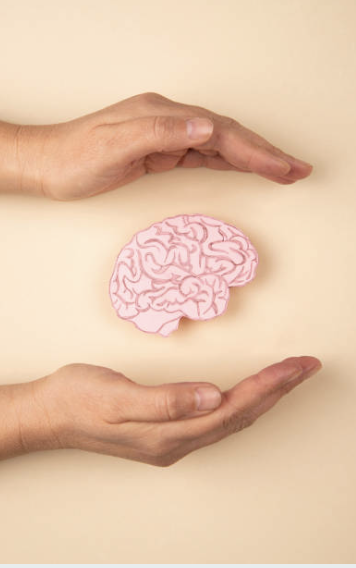Many healthcare providers are not trauma-informed, meaning they do not consider the impact of childhood experiences or life experiences, such as complex trauma, on a person’s health. As a result, they may not provide the appropriate care needed for healing. The lack of trauma-informed care is a significant issue.
Unfortunately, this applies to therapy, too. I found this out the hard way. After fifteen years of therapy, my body was dying, I was bedridden, and doctors couldn’t help me.
I’m writing this blog to help you make the right decisions for your trauma-healing journey. It’s important to find trauma-informed care, especially for complex trauma. If you’re on a healing journey, you’ve probably been to therapy or are considering it. Yes, it can be helpful. BUT, it’s only a small piece and finding the right person to help is crucial.
What is Complex Trauma?
Trauma can be an event or experience that is profoundly distressing or disturbing. Ultimately, trauma happens when your brain and body are overwhelmed and you aren’t able to cope or process the emotions associated with an experience. Complex trauma typically involves experiences that happen over longer periods of time. Childhood trauma, abuse, neglect, and having a mother wound are just a few examples of things that can cause complex trauma.

At the core, complex trauma means you’ve been exposed to multiple and chronic traumatic events. They are often within interpersonal relationships and typically over an extended period. Within the context of a relationship, you can feel trapped, powerless, or powerless inescapable.
Complex trauma can have more severe and long-lasting effects on your mental, physical, and emotional well-being compared to a single traumatic event. It can often lead to a range of psychological and physiological difficulties, such as anxiety, depression, emotional dysregulation, dissociation, problems with attachment and relationships, and other issues.
Here’s what you need to know about therapy and complex trauma.
Please note: this is not a substitute for medical advice or a diagnosis. I aim to help you open your mind to new & complementary healing paths.
While therapy can be an effective way to address childhood trauma, it’s important to evaluate what is the “right” answer, depending on your unique circumstances. If you’ve been going to therapy for decades and you are still spinning your wheels, then you can see why this option has done all it can for you.

The biggest thing to understand is that childhood trauma, especially, can significantly impact your emotional, psychological, and physical well-being. And in order to heal complex trauma, we need to consider a holistic approach that goes well beyond the abilities of talk therapy.
Therapy is usually one of the first stops for most those on a healing journey.
Yet, unfortunately, most people don’t know what to do next when they are still in pain and therapy isn’t helping. I know; I’ve been there. I’ve also talked to many others who have been in this spot too.
First, let’s address the types of therapy you can consider as part of your childhood trauma-healing journey and the pros and cons of each.
What is Cognitive-behavioral therapy (CBT)
I call CBT talk therapy because it focuses on discussing your traumatic experience. Cognitive-behavioral therapy (CBT) aims to change negative thinking and behavior patterns through talking through problems. CBT is based on the concept that our thoughts, feelings, and behaviors are interconnected.
Cognitive-behavioral therapy relies on the notion that negative thoughts can result in negative emotions and behaviors (which is true, but it’s surface-level). CBT aims to help you identify and change your negative thought patterns, thereby, in theory, enabling you to develop healthier and more positive ways of thinking and behaving.
But what happens if your brain has changes from trauma that make positive thinking and behavior change difficult because of your biology? (Click here to read about how trauma changes your biology.) Then it means CBT might not work as well.
CBT is the current “gold standard” in healthcare and is often used to treat mental health conditions like anxiety disorders, depression, OCD, PTSD, and eating disorders. Yes, it can be helpful but it’s also important to recognize and honor its limitations.
Does CBT work for trauma survivors?
Some trauma survivors may find Cognitive Behavioral Therapy (CBT) challenging or may not respond well to this therapy because it can be difficult for you to engage in cognitive restructuring…. which is the entire point of CBT.
This means that you struggle to put things into words… And, of course, this makes sense. Because if you suffer from complex trauma, your brain doesn’t develop appropriately during childhood due to toxic stress.
Experiencing trauma can affect the development and function of the prefrontal cortex, making it challenging to process and regulate emotions, communicate effectively, and organize thoughts and memories.
Dialectical behavior therapy (DBT)
Dialectical behavior therapy (DBT) is a type of cognitive-behavioral therapy (CBT) developed to treat borderline personality disorder (BPD). People with trauma are more prone to being diagnosed with BPD. This type of therapy combines cognitive and behavioral therapy techniques with mindfulness and acceptance-based approaches to help you manage emotions, improve relationships, and develop coping skills.

DBT is based on the concept of dialectics, where two seemingly contradictory things can both be true at the same time.
For example, people in DBT may be encouraged to accept themselves as they are while striving for positive changes.Dialectical behavior therapy (DBT) usually includes individual and group therapy sessions, as well as phone coaching and skills training. During treatment, individuals acquire skills like mindfulness, emotional regulation, distress tolerance, and interpersonal effectiveness. These skills help them handle tough emotions, enhance relationships, and manage challenging situations.
Does DBT work for trauma survivors?
Some trauma survivors may find DBT challenging or not respond well to this therapy. One potential reason for this is that DBT can focus on distress tolerance and acceptance, which may be difficult for some trauma survivors.
In addition, trauma can lead to feelings of shame, self-blame, and a sense of being out of control, which is difficult to express in front of others. These feelings can be exacerbated by a focus on acceptance and tolerance. Again, because your brain develops differently, your brain doesn’t know how to process intense emotions like others.
Eye movement desensitization and reprocessing (EMDR)
Eye Movement Desensitization and Reprocessing (EMDR) is an adaptable psychotherapy initially created for PTSD. Now, we have found it’s beneficial for various mental health conditions. It targets specific memories or experiences to help you process and heal from trauma, phobias, anxiety disorders, depression, and addiction, leading to improved mental well-being. Therapists use EMDR as an effective tool to address a wide range of emotional challenges.
EMDR was developed specifically to help trauma survivors!
EMDR involves a structured, eight-phase treatment approach with cognitive and sensory elements. During therapy sessions, you are asked to focus on a traumatic memory or event while following a therapist’s hand movements or other sensory input, such as sounds or taps.
The theory behind EMDR is that eye movements and other sensory inputs can help you process traumatic memories in a new way, reducing the intensity of negative emotions and beliefs associated with the event.
Essentially, EMDR helps you rewire the trauma memory. Right now, it’s sitting in the emotional side of your brain. EMDR, helps you finish the neural connection to allow the memory to connect with the logical side of your brain.

This can help you feel more in control of your emotions and reactions and improve your ability to cope with similar situations. Essentially, unlike other modes of therapy, EMDR works to ensure you stay within your coping threshold—which is the biggest key!
Does EMDR work for trauma survivors?
Eye Movement Desensitization and Reprocessing (EMDR) was developed specifically for trauma survivors. Yay, we have a winner!
EMDR can be an effective treatment for all types of trauma survivors. With EMDR, you do not have to relive your trauma, and therapists are trained on how to guide you through healing in the most gentle way possible.
How does EMDR therapy work? What is Adaptive Information Processing?
EMDR therapy is based on the Adaptive Information Processing (AIP) model, which explains how memories are stored in the brain. Unlike traditional talk therapy, EMDR does not require the person to discuss their traumatic experience extensively. Instead, the focus is on changing the thoughts, emotions, and behaviors associated with the trauma to allow natural healing.
While the terms “mind” and “brain” are often used interchangeably, they are distinct concepts. The brain is a physical organ, while the mind refers to the collection of thoughts, memories, beliefs, and experiences that make up a person’s identity.

The brain’s structure (neuron connections) plays a critical role in how the mind functions, particularly regarding memory and sensory processing. In normal circumstances, memories are stored and networked together in the brain smoothly. However, this process can be disrupted during traumatic events, leading to storing memories in a way that inhibits healthy healing.
Trauma memories can, over time, become linked to other negative experiences, further reinforcing negative associations and impairing the mind’s ability to process and regulate emotions.
EMDR helps to reprocess these traumatic memories and associations through bilateral stimulation, such as eye movements or sounds. By engaging both sides of the brain, EMDR therapy aims to create new connections between the traumatic memory and more positive emotions, thoughts, and behaviors. Ultimately, this can significantly reduce the distress associated with traumatic experiences.
How does EMDR help reprocess and repair?
EMDR is based on the idea that bilateral movements stimulate both sides of the brain to reprocess traumatic memories more adaptively, aiming to reduce negative emotions and form more positive associations.
During an EMDR session, the person accesses memories of the traumatic event in a specific manner (not to overwhelm you) while receiving guided instructions and bilateral stimulation. This process facilitates the reprocessing of the memory and helps “repair” the associated mental injury.
As a result, remembering the traumatic event will no longer feel like reliving it, and the associated feelings will become more manageable.
In conclusion, childhood trauma can significantly impact your emotional, psychological, and physical well-being. Breaking generational trauma and healing your past can feel challenging, but you aren’t alone. You have options for your healing journey; being informed about the best options is critical.

Not all forms of therapy may be effective for trauma survivors, and some types of treatment can worsen the trauma. Cognitive-behavioral therapy (CBT), dialectical behavior therapy (DBT), and eye movement desensitization and reprocessing (EMDR) are some of the common types of treatment that trauma survivors may consider. Make sure you understand what’s best for you and talk to your provider; ask questions!
Ultimately, finding trauma-informed care and choosing the right type of therapy that works for you and your unique circumstances is crucial. Remember, healing is possible, and there are many different paths to get there.














